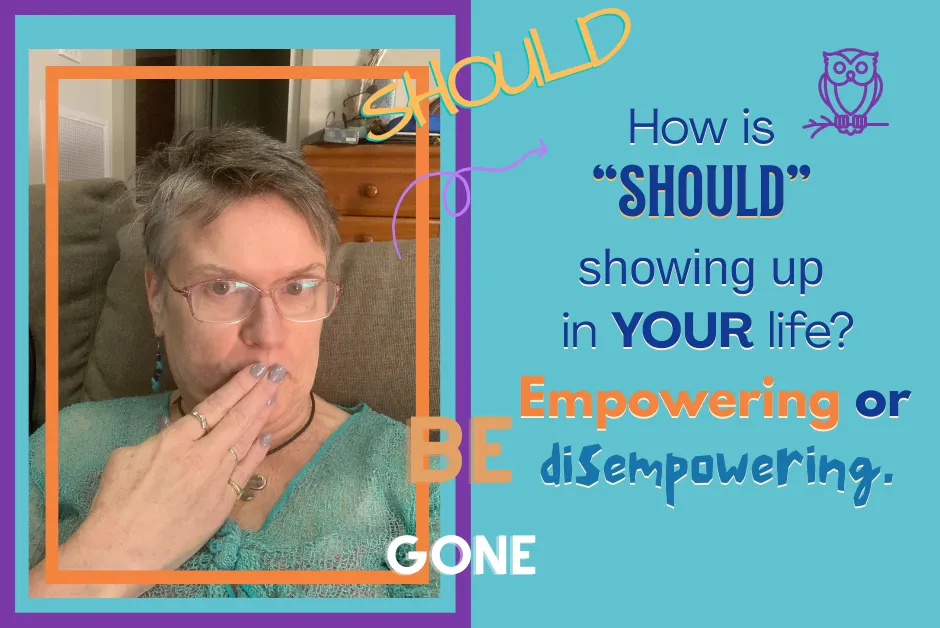
How is “SHOULD” showing up in your life? Empowering or disempowering
Words have a great influence on how we experience our world. The language we use — with ourselves and with others — shapes how we relate to one another.
This week, “should” has been showing up A LOT, in both my language and in the language of others.
The problem with “should” is that it carries weight. When we use it about things we want to be doing, or believe we ought to be doing but haven’t, it creates heaviness and negative energy.
And an even bigger trap? When we use “should” to guide and lead our children.
Think of the mother frustrated with her three-year-old for putting Lego in their mouth because they should know better. Or the parents of an adult child annoyed that they should have cleaned up after a late-night snack. Or the self-talk after we fail to finish a task we should have completed.
Why do we keep using “should” when it causes so much distress?
“Should” belongs to a family of verbs called modals — words that change the meaning of a sentence. Some modals express ability (can/could), some permission (may/can), others likelihood (will/might), obligation (must/have to), or advice (should).
The tricky part is this: should is advice, an opinion — and opinions don’t always carry truth, urgency, or importance. Yet we often wield them like rules, judging what hasn’t happened yet against what we believe ought to happen.
But what if the thing we think “should” happen isn’t yet within our child’s capacity? Or even our own?
A different way forward
What if instead we assumed the best first.
If your child is doing something you believe they shouldn’t be doing, remember this: children want to please us, even when it doesn’t look like it. Young children know they need us — and they are doing the best they can in that moment, we can provide them with the safe haven they need in order to be open with us.
When we assume best intentions first, everything shifts.
In fact, as Daniel Siegel and Tina Payne Bryson remind us in The Whole-Brain Child, our children’s brains are still under construction. Before age 10, they’re still building essential neurological “pieces.” Through the teen years, they’re maturing those pieces with adult scaffolding.
Our job? To trust the process and enable the apprenticeship.
That means modelling what we want them to learn. Because they will copy us anyway.
Letting go of “should”
Parenting is a long game. Our kids don’t need us to get it right every time. They need us to stay connected, keep perspective, and trust their development.
When we relax, park the “shoulds,” and create environments that foster learning, our children can relax too. That’s where growth happens.
You are enough.
They are worthy.
We all belong.
Together we ARE Stronger.
If “shoulds” are weighing you down — especially in parenting your strong-willed, sensitive, or neurodivergent child — you’re not alone.
In my upcoming Transforming Attachment Webinar, I’ll share practical strategies to shift from language that disconnects, to approaches that strengthen trust, cooperation, and connection.